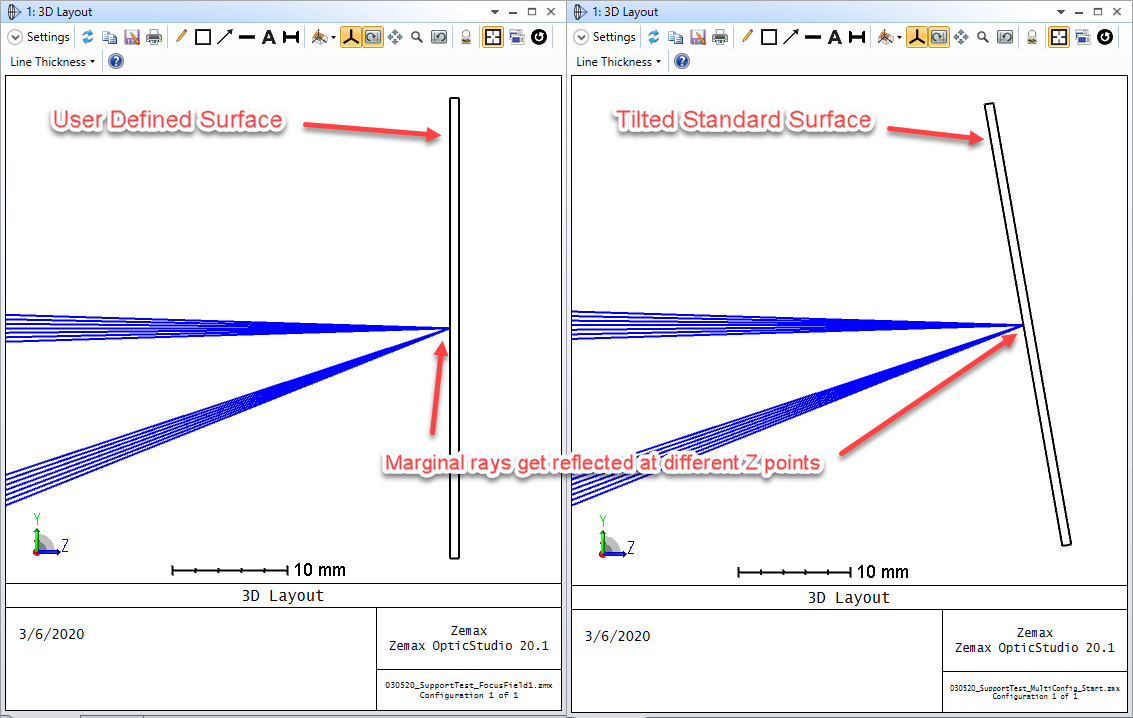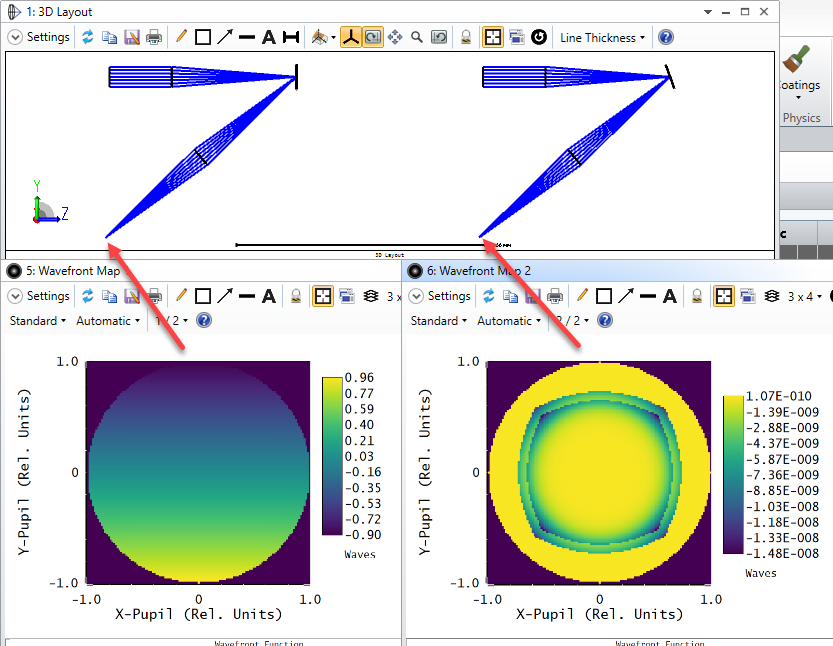Hello everyone,
I encountered some issues when trying to analyze the diffraction on my zemax simulation (PSF FFT, MTF ..) including a "us_mems.dll" user-defined surface (see "DMD_study_thorlabsassembly_withmems" zemax file).
With paraxial lenses, everything is working fine (see "DMD_study_paraxiallenses_withmems" zemax file) . But when introducing tube lenses assemblies, the PSF of the system, even in a very small FOV, is very degraded .
I thought the issue was with the lenses assembly but I tested other blackboxes and the analysis results is still surprising. So I simulated the matrix of micromirrors behaviour in multi-configuration mode (see "DMD_study_thorlabsassembly_multiconf" zemax file). It shows very good results with all lenses.
So my questions are :
- Have you already had issues with the user-defined surface "us_mems.dll" ?
- Do you know a reason why there could be some compatibility issues between "us_mems.dll" and black boxes (and, in particular, issues that would effect diffraction analysis) ?
Thanks a lot,
Antoine R.
PSF/MTF degradation issues using "us_mems.dll" and black boxes
Enter your E-mail address. We'll send you an e-mail with instructions to reset your password.






